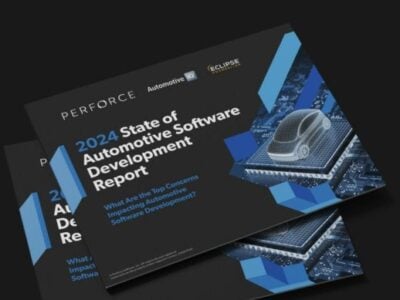
High stakes in the chip shortage
The chip shortage and Covid-19 is driving up chip costs says Reinhard Ploss, CEO of Infineon Semiconductors, but analysts warn of over-capacity and a price crash in 2023.
“We are not a company that plays poker and says it you need more chips you have to pay twice the price,” said Reinhard Ploss, CEO of Infineon at the opening of its latest semiconductor fab this morning. “We have increasing costs from the supply sector and higher investments and these increased costs are reflected in the costs for the customer.”
The opening of Infineon’s new 300mm fab in Villach today with the Chancellor of Austria is a prime example of the challenges of the semiconductor industry and the increasing importance of the semiconductor industry. The go-ahead for the €1.6bn project was given in 2018, long before Covid-19, and it opened ahead of schedule, right at the heart of the chip shortage.
The fab at Villach is producing silicon IGBT and MOSFET power devices on 300mm wafers for mainstream cars as well as electric vehicles and wind and solar power applications.
Related articles
- Why is the chip shortage getting worse?
- V-shaped pandemic sets up strong 2021 rebound
- Fateful Choices For ICs and Taiwan
- European Chips Act for semiconductor sovereignty
This time lag is key to the future, says Malcolm Penn of market analysts Future Horizon.
“TSMC is spending $28bn next year, and Samsung $30bn but the industry needs to spend $80bn next year to stay still so its just keeping pace, nothing more, nothing less,” he said.
“All the indications are that prices are on the way up – fab capacity is sold out with no near term relief in prospect. It sold out in January so heaven help us in the third quarter when the seasonal demand pick up happens. There’s no unused capacity, everything is straining and that’s the problem we will be living with this year.”
Future Horizons was the only forecaster to correctly predict the capacity crunch and this current ‘supercycle’, and is predicting 18 percent growth for 2022. “We think 18 percent is a very realistic number as there is no capacity relief coming until 2022 at the earliest. Even our bearish estimate is 11 percent and that would be unprecedented.”
Part of the problem with the automotive chip shortage came from the car makers cancelling orders at the start of the pandemic, says Penn. “Why should the chip industry favour automotive makers – they have the worst terms in the market and don’t want to pay for reliability, so tough,” he said.
But this is not unexpected, says Ploss. “This is not the first time we have been through this, and for every down it will go back up,” he said. “In terms of capacity overall in the market we are in a better position than parts of the foundry industry.”
There are plans for a new fab in the next ‘few years’ says Ploss, but Villach, Dresden and Kulim in Malaysia will all have to apply, he says.
This is not dependent on subsidies, even with the proposed European Chip Act to mirror the support in the US and China.
“We do not primarily go where the subsidies are but the US, Korea and China above all are doing a lot to expand the semiconductor industry as now they recognise this is fundamental to industry but this distorts the market,” he said. While there was €150m of support from the Austrian government and the EU as project of strategic importance, “it is not because of the subsidies but this helps us cushion the global distortions,” he said.
But the capacity coming on line will create oversupply as the semiconductor cycle continues.
“We are confident on the 18% growth, and a strong start in the first quarter will drive that number up. The supercycle will crash in 2023,” said Penn. “Prices are just recovering, so ASP growth will accelerate in Q3 and Q4, and that’s when you start building inventory and that’s the next hole to fall into.”
Other articles on eeNews Europe
- Farewell Clive Sinclair
- Satellite to test lunar satnav
- RISC-V teams for open hardware diversity alliance
- Galway in line for Intel megafab
 If you enjoyed this article, you will like the following ones: don't miss them by subscribing to :
eeNews on Google News
If you enjoyed this article, you will like the following ones: don't miss them by subscribing to :
eeNews on Google News



